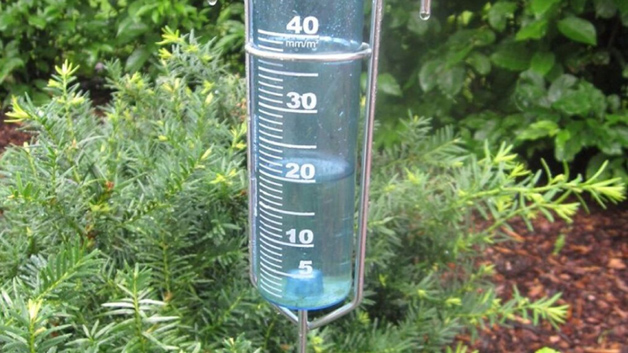Be prepared to water your new plants this summer

After a winter compounded by COVID restrictions, the excitement around the return of summer is heightened this year. Being able to get outside for more than brisk activity enables many more people to consider what they might do in their yards over the next few months.
This year we have a complication that needs to be taken into consideration when planning anything that involves growing plants. While upstate New York is blessed with lots of water, Great Lakes, Finger Lakes, rivers and, in normal years, plenty of rainfall, last year we experienced an unusual growing season.
After what started out with a pretty normal spring in terms of precipitation, things quickly dried up as we went into summer. If you only pay attention to the total rainfall measured at the airport, you might think that July 2020 would have made up for a lot of the deficit we had experienced at that point. However, there were three very large rain events that month, all occurring within a week or so. When rain falls in large amounts in a very short time, most of the water runs off the surface before it can infiltrate into the soil. The result, for plants, is that little benefit comes from that rain.
As we moved through the fall and winter, things continued to be dry. Many will say we had a snowy second half of the winter, but it never caught up to what we expect in a normal year. Though we had some rain this April, things are drying up again as we leave spring for summer conditions. The National Weather Service and the USDA are predicting extreme drought conditions in some areas west of the Mississippi River and dryer than normal conditions for most of the country.
This may sound like a ‘doom and gloom’ outlook for our new growing season. You can still plan to grow vegetables and flowers or install new ornamental shrubs and trees this year, just be sure to include in that plan the ability to supply water throughout the growing season. Additionally, you need to be able to supply that water in the most efficient, environmentally-friendly, and responsible manner.
Things to consider before planting will include identifying your water source (municipal water, well water, rain barrels, or other methods of capturing precipitation), and determining how close that water source is to the plants that will need to be watered. The closer the water to the plants, the more likely you will be to apply it. Watering during the daytime is the most wasteful use of this precious asset. More is likely to evaporate when the sun is high in the sky, delivering less to the plants. If you can, water early in the morning or late in the day so the water has a chance to soak into the soil.
Drip irrigation and soaker hoses help direct the water to the plant roots and also reduce the amount that evaporates. When using those methods, be certain that the hose is close to the plants otherwise water may get into the soil but not to the plant roots. Mulch will help prevent evaporation as well and helps keep the roots cooler at the same time. Finally, using a soil gel product might be a good idea this year, particularly for container plantings and for ornamental shrubs and trees. Be sure to read the instructions so that your plants get the full benefit. Too little won’t help matters and too much can water-log the soil.
A good rule of thumb is to make sure your plants get an inch of water each week. Investing in a rain gauge can help you determine how much is actually being delivered to the plants. You don’t need a fancy rain gauge; your investment can be under $5. Being smart about water usage and planning ahead to provide water for your new plantings will pay dividends in the end. Here’s to a great growing season.
Provided by Monroe County
Cornell Cooperative Extension




